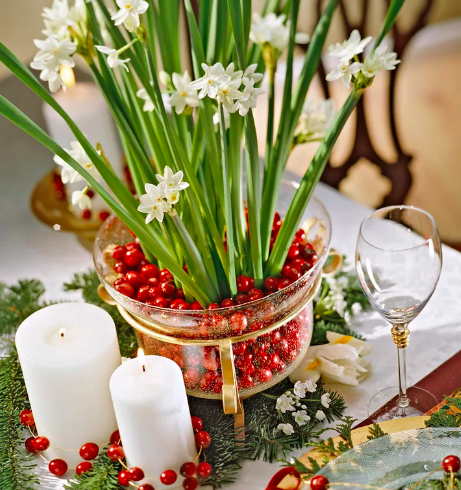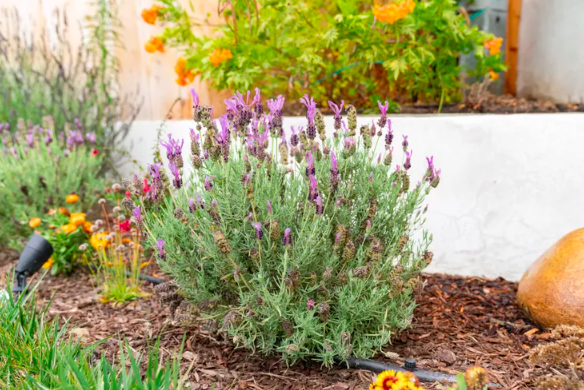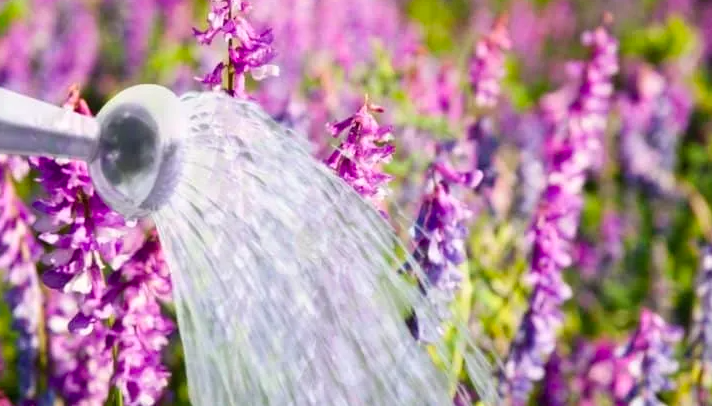Call: 0203 2825499 | Email us
Call: 0203 2825499 | Email us
Call: 0203 2825499 | Email us

I often get asked by clients what they can plant at the beginning of the year for Spring, as long as the ground is good enough then you can certainly plant some of the following until end of Jan. Although most spring bulbs are typically planted in late Autumn, planting at the beginning of the year is still doable, it will just mean the display will not be as abundant come spring.
Tulips, daffodils and other spring and summer bulbs can be planted during this month for a nice burst of colour come springtime
Daffodils come in a wide assortment of colours, including yellow, pink, white, orange and red. Plant bulbs in well-draining soil. Daffodils are relatively easy to grow and add visual appeal to any spring garden.

Tulips are great for adding colour into your flower beds. These upright flowers look best when planted in mass, making a statement on any landscape. Tulips need well-drained soil in full or partial sun to thrive.

January is the best time for planting bare foot roses, if the weather is mild and the ground isn't frozen or waterlogged, they can be planted out straight away. When planting, soak the root in a bucket of water for an hour or so just before planting. With so many different types of roses available, it's worth spending some time choosing the best one for your garden. Most roses look best planted in groups of three of the same variety and are perfect for your borders.

You could garden for a lifetime and still not know everything. That’s why the professional gardeners at Neils Gardens are here to answer your toughest questions. We have friendly and knowledgeable gardeners on staff at all times, so you can feel confident that you’re getting the right information, and the finest plants for your garden. Contact us for a chat about how to make your garden amazing ready for Spring!
In order for your blooms to be ready in time for Xmas its better to plan ahead for planting. So, although we are a few weeks away from Xmas I’m here to share my tips ready for you for next year! I love to fill my home with Xmas plants to fill a space.
For indoor planting you will need to get hold of 'prepared' or 'treated' bulbs which have been primed to flower quickly once you bring them inside and pot them up.
Ideal for indoor displays at Christmas are Hyacinths, also the perfect festive gift!

Hyacinths are the best bulbs at Christmas for their amazing colour and fragrant intensity.
When growing Hyacinths outside make sure to plant in moist but well-drained soil in full sun between September and November. Plant the Hyacinth bulbs in soil, 10cm deep and 8cm apart and water when the soil is dry.

When planting in pots indoors, the bulbs can be planted shallower and closer together but not touching. Plant them in September for Christmas flowering and it’s always good to wear gloves when handling them as they can cause irritation. Ideally place the pots in a bright spot with sunshine and lots of air, windowsills are perfect for these festive blooms to flourish.
Forced hyacinth bulbs for indoor displays won't be suitable for using indoors again, but you can plant them outside and they'll flower every spring for years to come.
Paperwhite narcissus are also a great crowd pleaser! They should be planted in October to get them to bloom for the holiday season. They naturally flower in January - February but good quality bulbs should bloom in time for the festive season. Plant the bulbs with their pointed ends just below the soil and keep them in a warm bright location. Keep them in a cool but sunny location in order to flourish. Water regularly so that the soil stays evenly moist.

Paperwhites are loved for their pretty white blooms that last for about two weeks. After they've faded, snip off the flowers and enjoy the green leaves as a houseplant for a few more weeks
Happy Xmas planting from us all at Neils Gardens
We would love to see your Xmas planting pictures so tag us on IG and we will repost! #neilsgardens

Lavender not only looks sensational but smells amazing, so why not plant some in your garden, whether it's in pots or in raised garden beds.
Lavenders tend to vary in their hardiness. English lavender is fine to leave unprotected over winter as it’s frost resistant.

French lavender is less hardy but more fragrant, extra care when pruning is needed for this lavender.

Lavender tends to prefer dry or moderately fertile soil, including chalky and alkaline soils. Lavender will not thrive in heavy clay soil or any soil that becomes waterlogged over winter.
Potty about Lavender!
In pots, use multi purpose soil and grit to provide drainage. Plant so the root ball is just under the surface and water well. It is advised to use ceramic pots, as they allow water to naturally evaporate. With plastic containers there is risk that water will stay inside. When your lavender is planted In pots, it’s a good idea to bring them into a greenhouse or just a sheltered position to stop them getting too wet over winter, as the roots don’t like to get too wet and can rot.
When to Prune?
It’s best to trim them back or prune in late summer. When they are not pruned lavender can become straggly and overgrown.
Lavender prefers sunny conditions so it is good to bear in mind when planting. When first starting your lavender plants, keep them regularly watered during their first growing season. After that, they can handle extended periods of drought—in fact, too much water can lead to fungal disease and root rot.

Fun Facts
Having lavender outside your back door can deter insects such as mosquitoes and flies, not to mention smell great!
Lavender is a great companion plant for the likes of roses also.
A major reason lavender is so prized is that its flowers keep their fragrance once dried. For best drying results, harvest the flowers as the buds first begin to open. Hang them in small bunches upside-down in a warm spot with good air circulation until dried.

Contact us for more info on ideal plants for your garden. enquiries@neilsgardens.com
Love or hate the frost, for your garden plants and trees it can reek havoc on your plants. Frost injures plants when water in the plant cells turn into ice crystals, which then disrupts the movement of fluids and damages plant tissues.
Here are my top tips for your garden this winter.

It won’t do any harm practicing a bit of vigilance and having a plan at the ready which can make a huge difference in protecting your delicate plants from the cold this winter. Look out for signs of frost damage which can include blackened, distorted or limp growth and leaves turning brown on evergreen plants and shrubs.
Most plants will need protecting from temperatures of 30°F (-2°C) or lower, but frost tender specimens should be protected before temperatures dip this low. I always recommend getting ready when temperatures start to fall below 32°F (0°C).
What’s important is to know the difference between your Hardy Plants and your tender ones. Hardy plants can typically withstand a short spell of frost, those plants include clematis, honeysuckle, heuchera, euphorbia, hydrangeas, buddleja, rhododendrons and some rose varieties.

Bear in mind if temps hit below -2 tender plants are not able to withstand the frost and therefore need extra attention, those plants typically Include fuschia, dahlias, pelargoniums, tree ferns, canna lilies, begonias and some succulents.

Potted plants are much more susceptible to root damage in colder temperatures so it might be an idea to move your hanging baskets and potted plants indoors. Choose a place that’s not too warm, ideal places being in your garage, shed, or basement.
Watering plants in the afternoon keeping the soil moist can help protect plants from the cold, moist soil has an insulating effect.
Mulch is perfect for your flower beds, adding a layer of mulch to your garden beds will help protect the soil from sudden swings in temperature. Use straw, wood chips, leaf mold, or even just a heap of leaves to provide crucial insulation for the plants’ root systems below ground. It’s ideal to leave a small hole around the central stalks in order to allow the plants to breathe. Remember when the weather gets warmer you will need to pull away the mulch again.
At Neil’s Gardens we like to promote the use of organic matter such as well rotted horse manure as it has a lot of great nutrients for the soil which lasts all year and provides moisture for the ground during the frosty weather.

A fleece protector - one method – which is useful for larger garden plants and shrubs – is to cover them with horticultural fleece. You could also use blankets or bubble wrap, to create a protective cover. You can also wrap the trunks of young trees with horticultural fleece or blankets. Place several stakes around your plants and then cover these with the chosen material to create a tent-like structure. Weigh down the corners to prevent the coverings from blowing away in the night and remove the covers during the day.

I often get asked if you can use plastic bags to cover plants but It is not advisable. Not only is it not very eco friendly or sustainable, the plastic can actually damage your plants if it makes contact with foliage, as it holds water against the plant and causes more damage from freezing.
Choosing the right plants for your garden is essential and knowing where to create the ideal planting positions carefully to avoid ‘frost pockets can be a minefield. So why not contact us for more info on the best low maintenance plants for all seasons.
Contact us at enquiries@neilsgardens.com